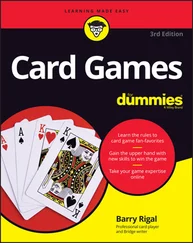Barry Fox - Arthritis For Dummies
Здесь есть возможность читать онлайн «Barry Fox - Arthritis For Dummies» — ознакомительный отрывок электронной книги совершенно бесплатно, а после прочтения отрывка купить полную версию. В некоторых случаях можно слушать аудио, скачать через торрент в формате fb2 и присутствует краткое содержание. Жанр: unrecognised, на английском языке. Описание произведения, (предисловие) а так же отзывы посетителей доступны на портале библиотеки ЛибКат.
- Название:Arthritis For Dummies
- Автор:
- Жанр:
- Год:неизвестен
- ISBN:нет данных
- Рейтинг книги:3 / 5. Голосов: 1
-
Избранное:Добавить в избранное
- Отзывы:
-
Ваша оценка:
- 60
- 1
- 2
- 3
- 4
- 5
Arthritis For Dummies: краткое содержание, описание и аннотация
Предлагаем к чтению аннотацию, описание, краткое содержание или предисловие (зависит от того, что написал сам автор книги «Arthritis For Dummies»). Если вы не нашли необходимую информацию о книге — напишите в комментариях, мы постараемся отыскать её.
Arthritis For Dummies
Arthritis For Dummies
Arthritis For Dummies — читать онлайн ознакомительный отрывок
Ниже представлен текст книги, разбитый по страницам. Система сохранения места последней прочитанной страницы, позволяет с удобством читать онлайн бесплатно книгу «Arthritis For Dummies», без необходимости каждый раз заново искать на чём Вы остановились. Поставьте закладку, и сможете в любой момент перейти на страницу, на которой закончили чтение.
Интервал:
Закладка:
If you have more than two gout flares per year, you have tophi, and/or an X-ray shows that your have permanent joint damage due to gout, your doctor will likely recommend chronic urate lowering therapy (for life), using a medicine such as allopurinol or febuxostat that lowers uric acid to levels where crystals cannot form.
Helping yourself heal
You can help heal gout and prevent its recurrence by:
Losing weight if you are overweight
Eliminating alcohol intake, especially beer or grain liquors, which contain purines
Eliminating foods containing purines (detailed earlier in this chapter)
Working with your doctor to keep your blood pressure under control, if it’s a problem, as well as heart disease and/or diabetes
Consulting with your doctor to make sure you’re not taking any medicines or supplements that encourage gout or interfere with your treatment
Exercising regularly
Studying Pseudogout: The Royal Pretender
Although gout is an ancient disease that has ruined many a day in a medieval VIP’s life, pseudogout is a relatively “new” affliction. Although it’s probably been around as long as “regular” gout, doctors didn’t realize it was a separate problem until it was first described in 1962.
 The official name for pseudogout is calcium pyrophosphate deposition disease (CPPD ), although “pseudogout” is still used by both doctors and patients.
The official name for pseudogout is calcium pyrophosphate deposition disease (CPPD ), although “pseudogout” is still used by both doctors and patients.
Summarizing the symptoms
The symptoms of pseudogout are similar to those of gout but without the needlelike uric acid crystals in the joint. Instead, pseudogout is characterized by rhomboid-shaped crystals made up of calcium pyrophosphate dihydrate. And although gout typically affects the big toe joint, pseudogout more often targets the knee.
The disease itself may be acute or chronic. Acute attacks are likely to strike suddenly, settle in, and last for several days or even weeks. (Fortunately, they are usually not as painful as acute attacks of “true” gout.) The chronic form of pseudogout produces attacks that last longer, typically targets more than one joint at a time and, with time, severely damages those joints.
The causes of pseudogout are unknown. Surgery, a hormonal imbalance, or a metabolic upset may touch it off. Sometimes it strikes in conjunction with other diseases or conditions, such as low blood levels of magnesium or excessive blood levels of iron or calcium. Pseudogout strikes men and women at about the same rate and prefers older folks, especially those over the age of 60. Trauma to a joint will also increase the risk of developing pseudogout in that joint.
Diagnosing and treating pseudogout
Because pseudogout can masquerade as gout, rheumatoid arthritis, or another ailment, diagnosis is usually made by inspecting fluid taken from the affected joint. If you have pseudogout, your fluid will contain calcium pyrophosphate dihydrate crystals. (These crystals can also be picked up on X-rays.)
Unfortunately, there’s no way to cure the disease completely and no method for removing the offending crystals from the joints. Instead, doctors will try to relieve the symptoms, typically by prescribing NSAIDs or the gout drug, colchicine, to reduce the pain and inflammation. In difficult cases, steroids such as prednisone may be needed to get the inflammation under control. Your doctor may also “tap” the joint and draw out the excess fluid to relieve the pain. Any of these treatments can bring relief during attacks but they can’t prevent joint damage. Unlike gout, there is no curative long-term treatment for pseudogout. But, fortunately, most sufferers will do well if their pain and inflammation are kept under control by medication.
Understanding Juvenile Idiopathic Arthritis
Arthritis is bad for everyone, but it seems worse when it strikes children. Juvenile idiopathic arthritis or JIA (formerly called juvenile rheumatoid arthritis or JRA) is a broad term for childhood arthritis diseases that appear before the age of 17 and are characterized by joint inflammation that lasts more than six weeks. Nearly 300,000 children in the U.S. are affected by arthritis or other rheumatic conditions; more children than are currently affected by cystic fibrosis, sickle cell anemia, and muscular dystrophy combined.
 The word “idiopathic” means the disease has no known cause. JIA is an autoimmune disease that causes the body to turn on itself and destroy its own joint tissue. It can cause pain and stiffness that comes and goes and changes from morning to afternoon or day to day. When the symptoms worsen, it’s called a flare or flare-up . Sometimes JIA goes away on its own for a short or long period of time, or even forever; these periods of time are called remission . Fortunately, many teens eventually experience full remission and end up with little to no joint damage.
The word “idiopathic” means the disease has no known cause. JIA is an autoimmune disease that causes the body to turn on itself and destroy its own joint tissue. It can cause pain and stiffness that comes and goes and changes from morning to afternoon or day to day. When the symptoms worsen, it’s called a flare or flare-up . Sometimes JIA goes away on its own for a short or long period of time, or even forever; these periods of time are called remission . Fortunately, many teens eventually experience full remission and end up with little to no joint damage.
Summarizing the symptoms
There are seven kinds of JIA that can be differentiated by their symptoms:
Enthesitis-related arthritis (ERA): ERA causes pain and swelling in the joints and the points where tendons and ligaments attach to the bone. The hips, knees and feet are the most likely sites of this form of JIA, although the back and the sacroiliac joint (the triangular bone between the lumbar spine and the tailbone) can also be affected, usually later in the disease process. ERA occurs most often in boys older than age 10. The presence of the HLA-B27 gene and eye inflammations called uveitis or iridocyclitis are commonly seen with ERA. These forms of eye inflammation can cause irreversible eye damage, so it’s important for children with JIA to be routinely screened by an ophthalmologist.
Oligoarthritis: Around half of all children with JIA have oligoarthritis, which usually involves less than five joints, strikes in the knees and other large joints, and may only strike one of a pair of joints (one knee rather than both, and so on). In 20 to 30 percent of cases, oligoarthritis can trigger the eye inflammations uveitis or iridocyclitis . Fortunately, many children outgrow oligoarthritis, although eye problems can continue into adulthood.
Polyarthritis, rheumatoid factor-negative or -positive: Polyarthritis strikes some 40 percent of those with JIA and attacks five or more joints during the first six months of the disease. It usually appears in children younger than 5 and settles in the fingers and other small joints, although the large joints are not immune. The disease is usually symmetrical, which means it attacks the fingers on both hands, rather than just one. There may also be a fever and rheumatoid nodules. Polyarthritis is further divided into those that test positive for rheumatoid factor (RF) and those who do not. Of all the types of JIA,polyarthritis with a positive RF is the one that is the most like adult RA.
Psoriatic arthritis: This form of arthritis is much like the adult form of the same disease, both of which are combinations of psoriasis and arthritis. Usually involving the knees and/or the small joints of the hands and feet, psoriatic arthritis starts with a few joints then spreads to others. In 50 percent of sufferers, severe inflammation of the finger joints and toe joints can make the digits look like sausages.
Systemic JIA: The systemic form of JIA affects the entire body, causing trouble wherever it settles. The least common form of the disease, systemic JIA may produce fever, pale red spots on various parts of the body, anemia, swollen lymph nodes, inflammation of the linings of the lungs and heart, joint swelling, pain and stiffness, and other problems.
Читать дальшеИнтервал:
Закладка:
Похожие книги на «Arthritis For Dummies»
Представляем Вашему вниманию похожие книги на «Arthritis For Dummies» списком для выбора. Мы отобрали схожую по названию и смыслу литературу в надежде предоставить читателям больше вариантов отыскать новые, интересные, ещё непрочитанные произведения.
Обсуждение, отзывы о книге «Arthritis For Dummies» и просто собственные мнения читателей. Оставьте ваши комментарии, напишите, что Вы думаете о произведении, его смысле или главных героях. Укажите что конкретно понравилось, а что нет, и почему Вы так считаете.












